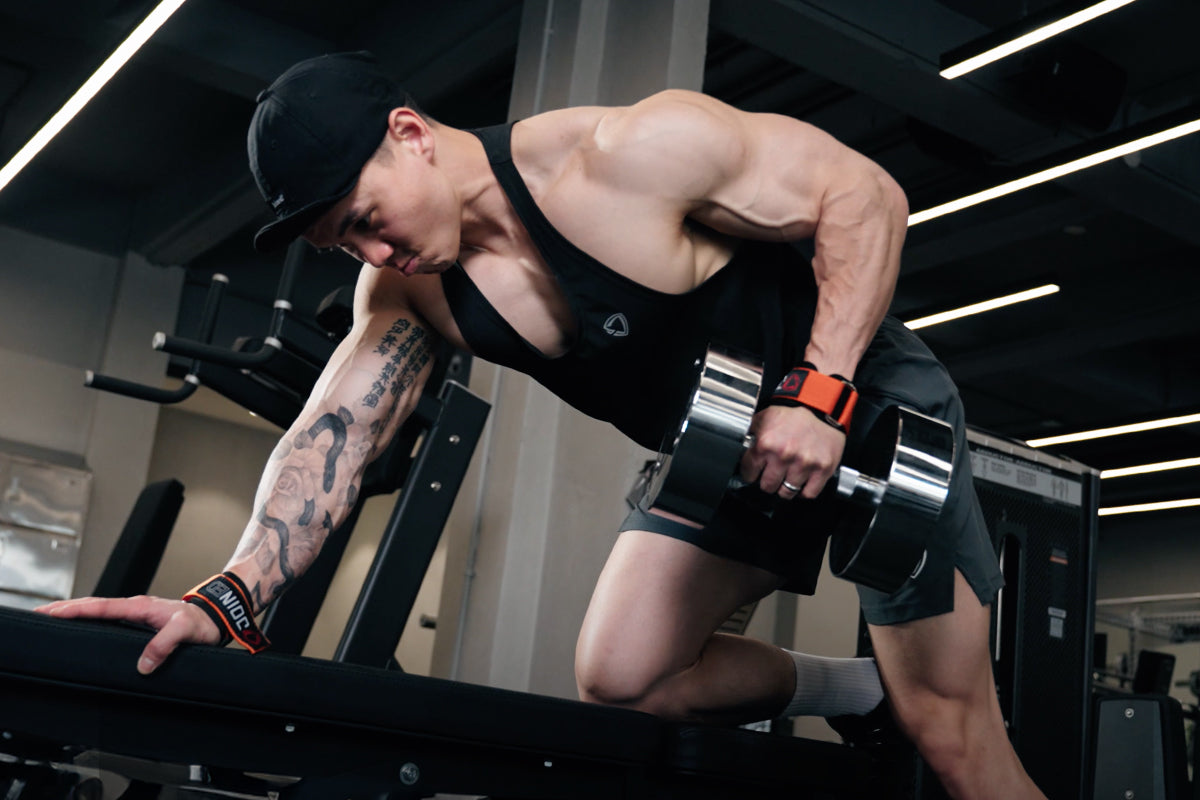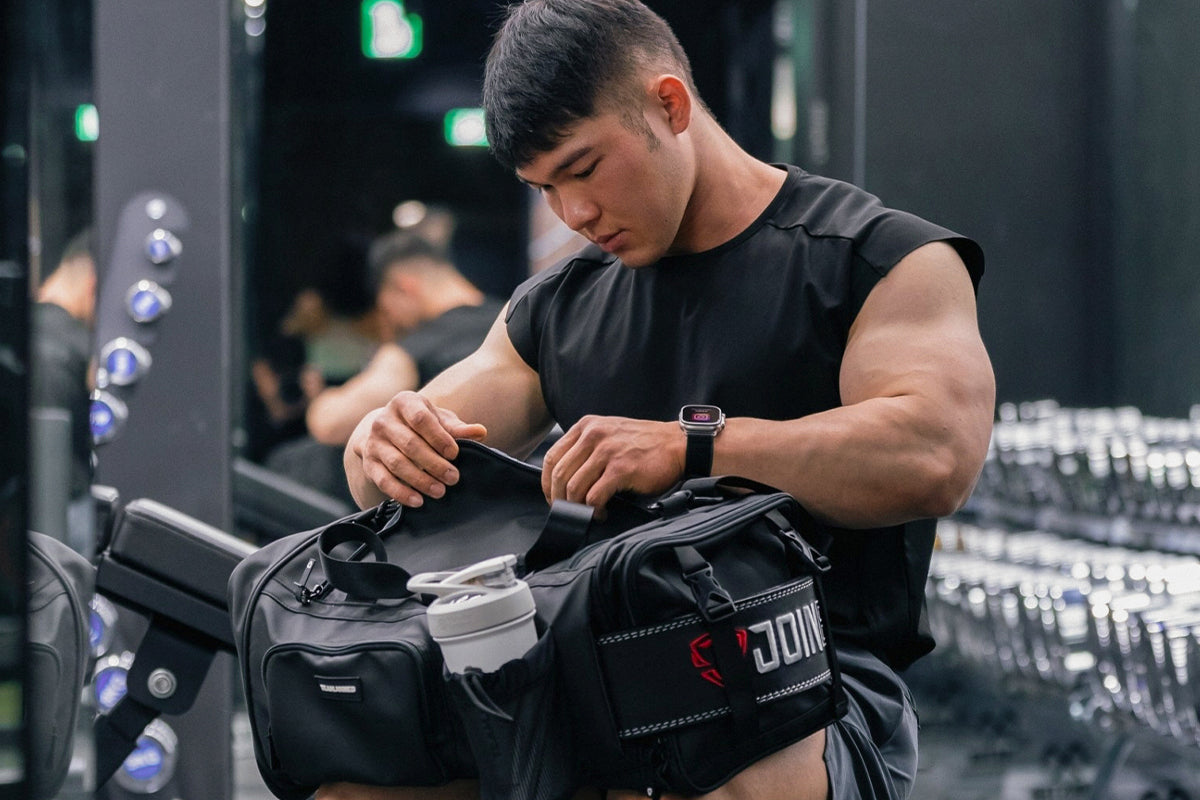
Lifting belts: The perfect guide to hold up your workout
We all need some support in our fitness journey. Some get a PT, others may do it with a bunch of friends. For those who are wanting some more individual type of assistance to take your workout to the next level, a weightlifting belt could be the perfect solution!
Lifting belts have been used throughout history to aid those in conquering their challenges. Ancient Norse mythology has the renowned Thor doubling his strength by donning the legendary Megingjörð. Olympians weightlifters have been known to use belts to aid in better lifts dating all the way back to the late 1800’s. And nowadays, anyone can wear a weightlifting belt, regardless if for competitive or if just hitting the gym for a routine workout.

Picture from: https://twitter.com/abfolklore/status/1354718330612015104?lang=zh-Hant
But it can be a challenge knowing when to start using a belt, and what type of belt to go for. So TeamJoined is here to help you out, with all the information you need to hold up your workout!
When to don the belt
For many starting off their fitness journey, rushing straight to purchase a lifting belt can be more troublesome than advantageous. Lifting belts can often feel bulky and intrusive, especially for those who are only just getting things rolling. So it is important to first have a firm understanding of the basics and proper form. Try out those crazy looking machines, do some squats with lighter weights. The main message here, don’t overload!
After understanding the basics, you can start to contemplate whether or not a lifting belt would be a benefit to your routine in order to provide a positive linear progression in your fitness journey. For some people this may be after a couple of months of training, and for others it may take longer, there is no set time frame to worry about.
Stability is at the core of using a weightlifting belt. Let’s take the squat for example. During a squat you are working hard to activate essentially your entire lower body, such as quads and glutes, all whilst a big bar is placing pressure on the top section of your spine. If not done well, or with an unstable foundation, you risk putting yourself in an unsafe situation which can lead to potential injuries. A lifting belt assists in increasing intra-abdominal pressure, as you have a solid and firm foundation bearing into the belt. With greater intra-abdominal pressure and correct bracing skills, you will be able to develop more effective breathing and lifting techniques. This can also be applied to exercises such as deadlifts. So if you are wanting to break your plateaus and push forward in your progress in a safe way, a lifting belt could be a great option.
Understanding the options
So you have decided that getting a lifting belt is the next step in your fitness journey. But now the dilemma is how to decide which one is actually suitable for your particular goal. Weightlifting belts come in a wide range, with variations in thickness, material and even the style, all of which play an important part in figuring out which option is the best. Let’s now talk through the options available to you when selecting your belt.
Nylon Belt

A Nylon velcro belt is the thinnest option available and is a great option for general strength & condition training, and also Crossfit. Its softer fabric allows for maximum movement in comparison to a thicker belt, is often inexpensive and can be transported easily. Having a thinner fabric does mean that there will be less amount of pressure to rely upon when doing your exercise, however if you find that leather alternatives feel intrusive and clunky, a nylon belt would be a great option.
Leather Lifting Belt

The leather lifting belt is an iconic staple with its metal prong buckle. Often with a medium level of thickness and widened back, this style of belt provides satisfactory stability to the core, more efficient range of motion in comparison to thicker belts and great assistance to bodybuilding, weightlifting and general strength and conditioning training. A criticism is often found in regards to its buckle, as whilst it can be adjusted to fit any waist size, if you have pushed yourself to its limit, it can sometimes be troublesome to quickly unbuckle. Overall the leather lifting belt is a middle ground between a nylon and lever belt.
Lever belt

A lever belt is all about optimising your potential. It is nowadays the most common choice amongst professionals and often considered the best belt for both powerlifting and heavy weight training. Whilst at the higher price range and often uncomfortable to begin with, the quick lever belt is top quality, as the extra thickness provides the most core and lower back support possible. This is all complemented by the unique buckle design. The quick lever buckle allows for ease of locking the belt in and out of position. It is important to note that these buckles are screwed into place. So if you are needing to adjust the sizing of the belt, you will need to have a screwdriver handy to make the adjustments. The quick lever belt is a long term investment, the higher price tag can be a deterrent for some, but if you are willing to put decent money into a lifting belt, a lever one will be a great help to breaking those personal records.
Dip Belt

Most lifting belts prioritise stablising the core and providing added pressure in order to release extra energy throughout an exercise, however some belts can even take it the next step further. The dip belt is often made from hardened nylon or rubber material, providing slightly extra support to that found in the original velcro variant. Its key feature is in the addition of an iron chain and carabiner. Commonly used for exercises such as dips and pull ups, this belt variation provides sufficient stability, all whilst through addition of the chain, is able to add extra resistance for a more intensive workout.
Wearing it right

Having a belt is one thing, but being able to use it effectively is another matter entirely. And after all of our experience and research, we have found two components to be critical - positioning and breathing.
For beginners it is quite common to ask yourself how to wear a weight lifting belt properly, and figuring out sitting can be quite a complicated matter. To begin with, you wanna make sure that the belt is firmly secure, you want it nice and firm but still have enough space to place a finger between the belt and your body. When looking around at the gym to figure where others might have their belt placed (whilst trying hard not to be caught staring) you may notice some people may have it locked with the buckle right on the navel, some sitting down lower and some up higher. The main priority here is comfort, ensuring that regardless of where the belt is sitting, it is comfortable.

For ourselves at TeamJoined, we often find that having the belt position slightly above the navel to be the way to go, and there are a couple of reasons for this. Firstly is that if the belt is down too low, it can sometimes get in the way of leg movements. But the main reason for having it sit up higher is due to diaphragm. The pressure which comes naturally during breathing is centered around the diaphragm, which is around the rib cage. As such through having it in this position you are centering the belt to where the pressure is stimulated.
At the forefront of effective lifting belt usage is *image a drum roll*...... breathing!!
That’s right, something so simple and rudimentary is what can make or break when using a lifting belt. Inhaling results in the mid section pushing out, creating increased pressure into the belt and allowing for more power to be generated.
An interesting component of this is nasal vs mouth breathing. It is the concept of establishing a circumferential breath and bracing deep into the abdomen. Commonly, breathing through the mouth results in a slight arching movement in the back. This slight arch subsequently makes movement throughout the pelvis and spine, making it more challenging to have a stable core. Therefore we often found ourselves creating a more solid base through nasal breathing as there is limited movement in the lower body. Regardless of which method makes you feel more comfortable, ensure that your core is secure and pressure is applied accordingly, or else your belt will just be limiting your potential.

A lifting belt is indubitably a great addition to anyone’s workout equipment if they are hoping to unlock their full potential and unleash all that reserved energy. However, ensuring that you have the correct type of belt and understand how to use it effectively is vital. Through becoming more familiar with the technique and feel of using a weightlifting belt, you will be holding up every single workout. Get the next chapter of your fitness journey started today with TeamJoined’s lifting belts, available now!
Written by Connor O'Brien 21thOct, 2022








